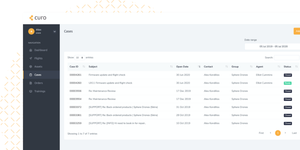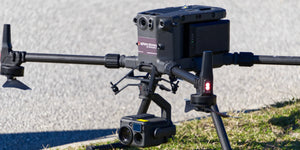The use of a drone tether to provide situational awareness was once the sole privilege of leading military forces who possessed the budget and the doctrine to employ them effectively. Following in the footsteps of previous military technologies such as the internet and GPS, UAVs are now commercially available and more importantly at an affordable price.
This advancement in the availability of technology has allowed Emergency Services to bridge the capability gap and acquire tactical military grade surveillance assets; greatly enhancing situational awareness and the ability to respond to threats. Since 2014, UAV use by Emergency Services has steadily increased as departments became aware of the capability, but more importantly operating procedures were developed to allow these units to be deployed efficiently, safely and in conjunction with local legislation [1].
The affordability of commercial UAVs makes them an attractive asset for procurement by Emergency Services who can benefit from the range of high resolution, day/night/FLIR optics that are available. The challenge comes from the trade-off between payload vs endurance which has always been a delicate balance when conducting any kind of flying. Thrust must overcome weight in order for any kind of rotor craft to take off. Because of this, UAV’s, which are currently reliant on batteries for their power source, see a decrease in endurance with an increase in payload. A DJI M600 boasts 32 minutes of flight time without any payload, but when fitted with a Ronin MX Camera (6kg) this is dramatically reduced to 16 minutes of usable flight time [2].
For some applications a 20-30-minutes flight time is adequate, searching an area for a fugitive or missing person can be completed quickly and then the UAV can be recovered, batteries changed before moving on to the new area to be searched. Equally in these instances it is the UAVs freedom of lateral movement which provides its greatest value as it can quickly cover a lot of ground which may be inaccessible or even dangerous for responders to access. When Endurance is required, there are two main options available: A supply of readily charged batteries or providing a continuous power source by tethering.
UAVs tethers trade lateral movement for increased endurance as they are physically and securely connected to a ground station by a micro-tether. This tether not only provides the physical security of keeping the UAV in place but also provides power and in some cases the ability to transfer secure data which, because it is not being transmitted by Radio Frequency, cannot be jammed. By tethering their UAV, Emergency Services gain a persistent Intelligence, Surveillance and Reconnaissance (ISR) asset which provides levels of situational awareness that were previously unobtainable.
Applications for utilising a drone tether include:
Traffic monitoring, crowd control and event security – A tethered UAV with an XDM x30 zoom camera can detect a human at 10 km and can cover a 300 km2 area [3].
VIP/Diplomatic protection – Tethered drone systems provide an overt deterrent which can be rapidly deployed and redeployed in response to changing situations. Video imagery can be shared between multiple units, increasing the situational awareness of the protection detail.
Active shooter, hostage situation, Counter Terrorism activities – A drone tether provides enduring observation without exposing responders to fire. Dead ground can be searched, and approach routes cleared whilst IR cameras can be used to track suspects attempting to evade.
Operating in conjunction with Aviation assets or in the vicinity of airspace – A tethered UAV provides a greater level of flight safety. It can be NOTAM’d accurately and because it is in a fixed location provides mitigation for Aviation Authorities when issuing clearance to operate [4].
Wildfires, large industrial incidents, HAZMAT – IR cameras can track the progress of a wildfire whilst also keeping track of firefighting teams to ensure they don’t get cut off. Industrial and HAZMAT incidents can expose responders to increased risk, this can be mitigated by using a tethered UAV to survey the area whilst protecting human life.
Incidents in built up areas or in proximity to sensitive sites – ‘Urban Canyons’ found in cities with high rise buildings present challenges for operating UAVs safely. This can be mitigated by using a tether to ensure the security of the aircraft and the safety of the public.
Natural Disasters, Urban Search and Rescue (USAR) – Temporary communication networks can be rapidly established by deploying an enduring tethered UAV. This buys time for infrastructure to be repaired and services bought back online and more importantly is more portable and rapid than erecting masts.
Drone tethers need a power source to operate, mains power (if available), portable generators or emergency vehicles equipped with an inverter all provide options for successfully deploying a tethered UAV. The flexibility of a tethered UAV system that incorporates the original battery allows rapid re-rolling from tethered to untethered flight as the situation evolves. Other tactics that can be utilised to increase flexibility include utilising a tethered UAV with a second traditional UAV. The tethered asset provides uninterrupted overwatch of the scene, if it spots an area of interest or if the situation becomes mobile the untethered asset is launched to investigate.
Source: Elistair



















